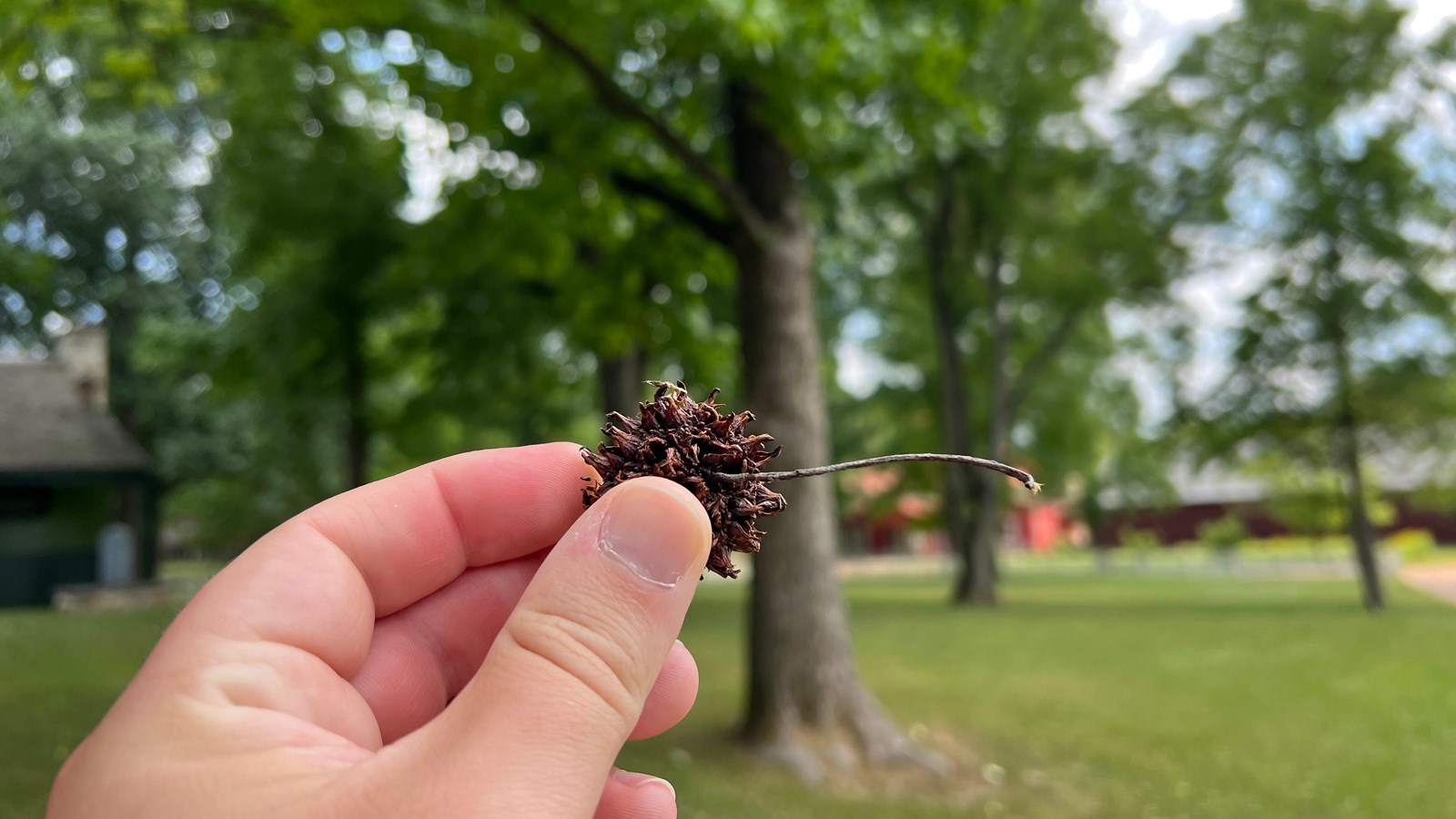Last updated: July 3, 2022
Place
Sweetgum Trees at Ulysses S. Grant NHS

NPS
Information
“What are these weird looking, spiky balls all over the ground?” – Many Visitors to the Park
The most asked about trees at Ulysses S. Grant National Historic Site are the many Sweetgum trees scattered throughout the park grounds. The unique, spiky balls seen on the park grounds have a green color while growing on the tree’s branches. Once the “Sweetgum Balls” reach maturation, they turn brown and fall to the ground. Native to the Southeastern United States, Sweetgum trees are fast-growing, hardy trees that thrive in warm climates and wet soils often seen in river bottom areas like St. Louis. The leaves on these trees often have a glossy finish, while the wood is often used for lumber, plywood, veneer, and other industrial uses.
The Sweetgum trees seen on the property today date to the mid-twentieth century and would not have been here during the Grant family’s time at White Haven. However, Julia Dent Grant recalled in her Personal Memoirs that locust trees would have stood around the immediate circumference of the White Haven estate at the time. While standing “on the south end of the front piazza at our old home, White Haven . . . the very trees were welcoming me, and, sure enough, the tall locust trees were tossing their white-plumed branches gleefully,” she recalled.
The scientific name for Sweetgum trees is Liquidambar styraciflua L.
